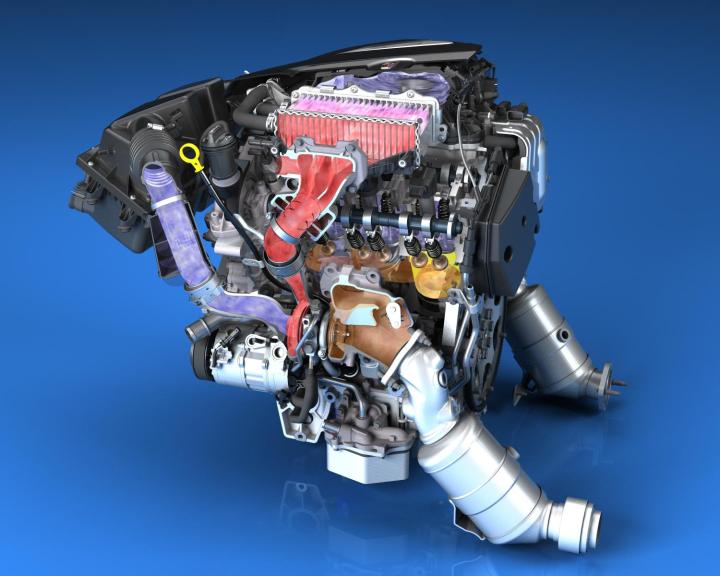
The CT6 will be powered by a 3.0-liter twin-turbocharged V6 that Cadillac says is the first in a new family of six-cylinder engines that will eventually be used in other models.
In the CT6, the twin-turbo engine will produce 400 horsepower and 400 pound-feet of torque, which will be channeled to the rear wheels through an eight-speed automatic transmission.
So while one would normally expect a V8 in something this prestigious, the V6 should be able to hold its own. It makes for an impressive 133 hp per liter of displacement.
To make the most of that power, the new engine will feature low-inertia turbochargers with titanium-aluminide turbine wheels, based on the ones used in the 2016 ATS-V.
Cadillac says these turbos can spool up faster, eliminating dreaded “turbo lag” and providing a broad torque curve that should help the engine feel more responsive.
Also contributing to responsiveness is a low-volume charge-air cooling system, which shortens the distance air has to travel before entering the combustion chambers.
Keeping the incoming air cool is important because it increases density, which makes for more energetic combustion, Cadillac claims its system can chill air by 200 degrees Fahrenheit with 60 percent less volume than other setups.
Eschewing a V8 for a V6 should bring some fuel-economy benefit as well, but Cadillac didn’t stop there.
The brand claims its creation is the first turbocharged six-cylinder engine to feature both cylinder deactivation and engine start-stop. The former shuts off some cylinders while the car is moving, while the latter completely kills the engine during stops at traffic lights, etc.
The 3.0-liter twin-turbo V6 will enter production with the 2016 CT6 itself later this year, and will eventually spawn a whole family of related engines.
That will include a replace for the naturally-aspirated 3.6-liter V6 currently used in many Cadillac models.
Editors' Recommendations
- The 2020 Hyundai Sonata turbo shows value and performance can go hand in hand
- Cadillac’s new 2020 CT5 sedan lets you Super Cruise across America


